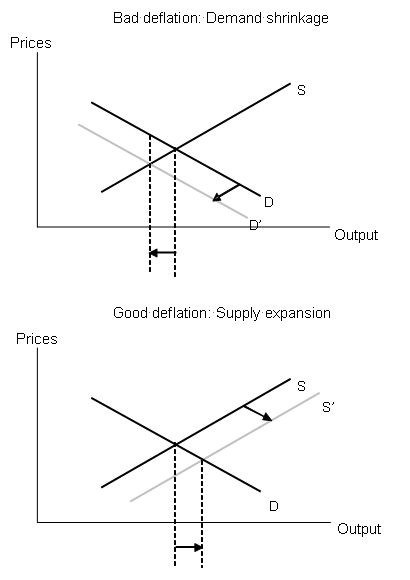The global economy is facing deflationary pressures, and China and Japan are no exceptions. However, in contrast to the Japanese economy, which is suffering a protracted downturn, relatively high economic growth is continuing in China, despite the continued fall in prices. Economic activity generally slows down under deflationary circumstances, as can be seen in the case of Japan. So, why does this not hold true for China?
There are many hypotheses regarding the causes of deflation in China, but let me list some of the most typical ones.
1) Insecurity. During the planned economy years, workers were guaranteed lifetime employment as well as benefits in the areas of medical care, housing and pensions. However, with the transition to a market economy, people have become vulnerable to the risk of losing their jobs, and with the addition of the anxieties of their lives in old age, they must cut down on consumption and save more.
2) Unequal distribution of income. The fruits of the economic growth of recent years have not been distributed equally. The gaps between the coastal and inland regions, and between the urban and rural areas, especially, have widened, and Chinese society is being polarized into the rich and the proletariat. Consumption has grown sluggish as a result.
3) Credit crunch. Despite the fact that the main players in the Chinese economy have shifted from state-owned enterprises to private firms, the four major state-owned banks still dominate the banking sector. Because they continue to lend mainly to state-owned enterprises, while private firms are still facing funding shortages, potential investment opportunities are not realized. Although authorities are urging state-owned banks to extend more loans to private enterprises, the credit crunch situation has remained unresolved, in part due to the fact that banks are shouldered with large amounts of non-performing loans.
4) Intensified competition. The planned economy in the past was a sellers' market, as was symbolized by the shortage of supply and the lines of customers at stores. However, with the transition to a market economy gathering pace, companies have begun to react swiftly to the needs of consumers, leading to the birth of a buyers' market where goods are in abundance.
5) Rise in productivity. Industrialization is progressing rapidly in China, with the leverage supplied by market reforms. China has come to gain the production and management techniques of foreign countries, especially by receiving foreign direct investment and processing trade. As a result, the country now has gained strong price competitiveness, particularly in the production of labor-intensive goods.
6) Excess labor. Because of the presence of large surplus of labor in rural areas, a rise in industrial productivity does not directly lead to an increase in wages. Furthermore, unemployment is also on the rise in urban areas, as a large percentage of the excess workforce at state-owned enterprises is fired as a part of the reform process.
These hypotheses all attribute deflation in China to structural rather than cyclical factors. So long as prices are determined by the balance between supply and demand, however, it is beneficial for us to categorize these factors accordingly. In terms of the diagrams below, demand side factors are represented by a shift of the demand curve to the left, while supply side factors are represented by a shift of the supply curve to the right. In China's case, the hypotheses based on insecurity, unequal income distribution and an ongoing credit crunch are factors on the demand side, while those related to intensified competition, rise in productivity and excess labor are supply side factors.
In reality, both demand factors and supply factors are at work at the same time, but the pattern of economic performance differs depending on which has the greater impact. Specifically, if demand factors have greater influence, the end product is "bad deflation," where both output and prices fall. But when supply side factors dominate, the result is "good deflation," where prices fall but output grows. Judging from the fact that the Chinese economy is growing fast while the Japanese economy is not, Japan seems to be suffering from "bad deflation" caused by dwindling demand, whereas China may be experiencing "good deflation" brought about by an increase in supply capacity. Thus if we attribute deflation in China mainly to factors on the supply side, rather than the demand side, we can solve the puzzle of why deflation and high economic growth can occur simultaneously.
Diagram : good deflation / bad deflation



